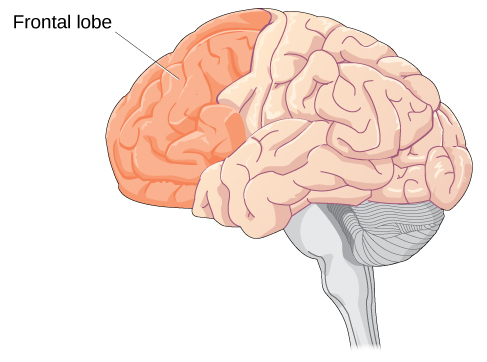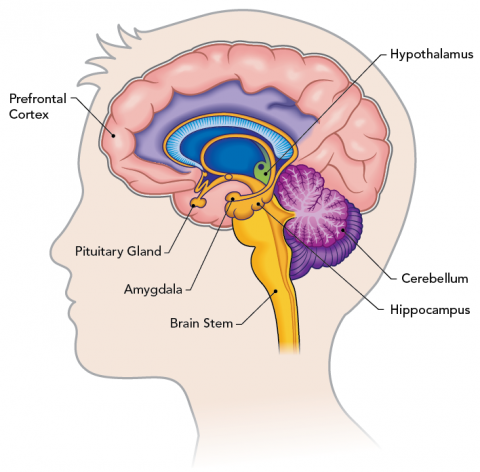Briefly Describe the Brain Changes That Occur in Adolescence.
Brain cells their connections and receptors for chemical messengers called neurotransmitters peak during childhood then decline in adolescence. 2 brain morphology is tied to HEREDITY more than environmental factors.

Adolescent Development Youth Gov
A gradual shift toward deliberate and thoughtful behavioral control.

. This is accompanied by an increase in attentiveness to social rewards and information. During adolescence there are changes involving the way the brain processes rewards and pleasure. Brain Changes during Adolescence.
A shifts in activity from the limbic system to the prefrontal cortex b an increase in myelination of the frontal cortex c remodeling pruning of synaptic connection and. USE IT OR LOSE IT. During adolescence brain cells continue to bloom in the frontal region.
One of the major changes that we see during adolescence is the development of the frontal lobe particularly the prefrontal cortex. Click again to see term. Brain growth occurs in two stages during adolescence.
However this growth takes time and the growth is uneven. At the same time other connections are strengthened. These two brains are facing each other.
Up to 24 cash back The changes begin earlier in development closest to the brain stem in the rear of the brain where the most basic functions begin to mature. - Most brain changes during adolescence occur in the frontal regions. Adolescence is a time of significant growth and development inside the teenage brain.
An increase in activity in the prefrontal regions as an indication of maturation Rubia et al. One of the most striking changes is the steady linear increase in dopaminergic neural projections that happens in both males and females in the brain area known as the medial prefrontal cortex or mPFC. Between ages 13 and 15 - characterized by a thickening of the cerebral cortex a more effective neuronal pathway and major changes in the prefrontal cortex- whilst the second stage starts at age 17 and.
What youll learn to do. This is the brains way of becoming more efficient based on the use it or lose it. 2003 are described as the neurobiological explanation for the behavioral changes associated with adolescence.
In rodents and primates this pathway undergoes extensive changes during adolescence. Ill roughly indicate where on the brain that is. There are dramatic changes in neural circuits particularly in frontal cortical and basal ganglia circuits during adolescence.
2002 and diminished activity in irrelevant brain regions Brown et al. Adolescents respond especially strongly to social rewards during activities and they prefer the company of others their same age. The main change is that unused connections in the thinking and processing part of your childs brain called the grey matter are pruned away.
To get under the hood scientists need to go back to the brains infancy and explore how it develops. During adolescence myelination and synaptic pruning in the prefrontal cortex increase s improving the efficiency of information processing and neural connections between the prefrontal cortex and other regions of the brain are strengthened. So heres the front.
Some of the most developmentally significant changes in the brain occur in the prefrontal cortex which is involved in decision making and cognitive control as well as other higher cognitive functions. It is well established that various morphological and physiological changes occur in the human brain during adolescence. Rewarding things feel more rewarding explains Steinberg.
And then heres the back of this one. The changes in how adolescents think reason and understand can be even more. Briefly describe the brain changes that occur in adolescence.
Large-scale longitudinal studies have shown that a basic reorganization of the brain occurs during adolescence. Throughout adolescence this process then moves slowly to areas of higher more complicated functioning and ends with the prefrontal cortex being the last to mature. What behavioral changes are thought to occur when the brains activity shifts from the limbic system to the prefrontal cortex in adolescence and early adulthood.
3 GIRLS brains are SMALLER but reach their maximum volume EARLIER. Many synapses are eliminated while at the same time there is an increase in white matter 9 10 and there are changes in neurotransmitter systems as well 11 e1 e2. People often deride the function of the frontal cortex in teenagers.
In addition to dopamine the adolescent brain is affected by oxytocin which facilitates bonding and makes social connections more rewarding. Thus the anatomical and physiological maturation processes that take place in. Adolescence also denotes both teenage years and puberty as these terms are not mutually exclusive.
With both dopamine and oxytocin engaged it is no wonder that adolescents seek peers and excitement. During adolescence myelination and synaptic pruning in the. But unlike a static mechanical machine like a car or a dishwasher the brain is an organ that grows changes and learns.
Tap card to see definition. Briefly describe the brain changes that occur in adolescence. Here we learn about adolescent cognitive development.
We believe that these changes adjust and tune the brain in order to sculpt learning and decision-making at these different life stages. This brain is sliced right down the middle. This general pattern of improved.
Increases efficiency improves memory IQ and READING not in PFC Interesting facts. - Neurons continue to become myelinated and after a period of overabundance of synapses the number of synapses declines. In adolescence changes in the brain interact with experience knowledge and social demands and produce rapid cognitive growth.
These qualities would help the teenager make sounder decisions in a responsible job like that of babysitting young children. Click on the targets below to learn how the brain grows changes and adapts to its environment through. 1 Brain volume DECREASES during adolescence.
Describe changes in cognitive development and moral reasoning during adolescence. The term adolescence is generally used to describe a transition stage between childhood and adulthood. With the maturation of the prefrontal cortex teenagers think with greater maturity responsibility and intelligence than ten or eleven year olds.
Also occurring during this time t he.

Brain Development During Adolescence Lifespan Development


No comments for "Briefly Describe the Brain Changes That Occur in Adolescence."
Post a Comment